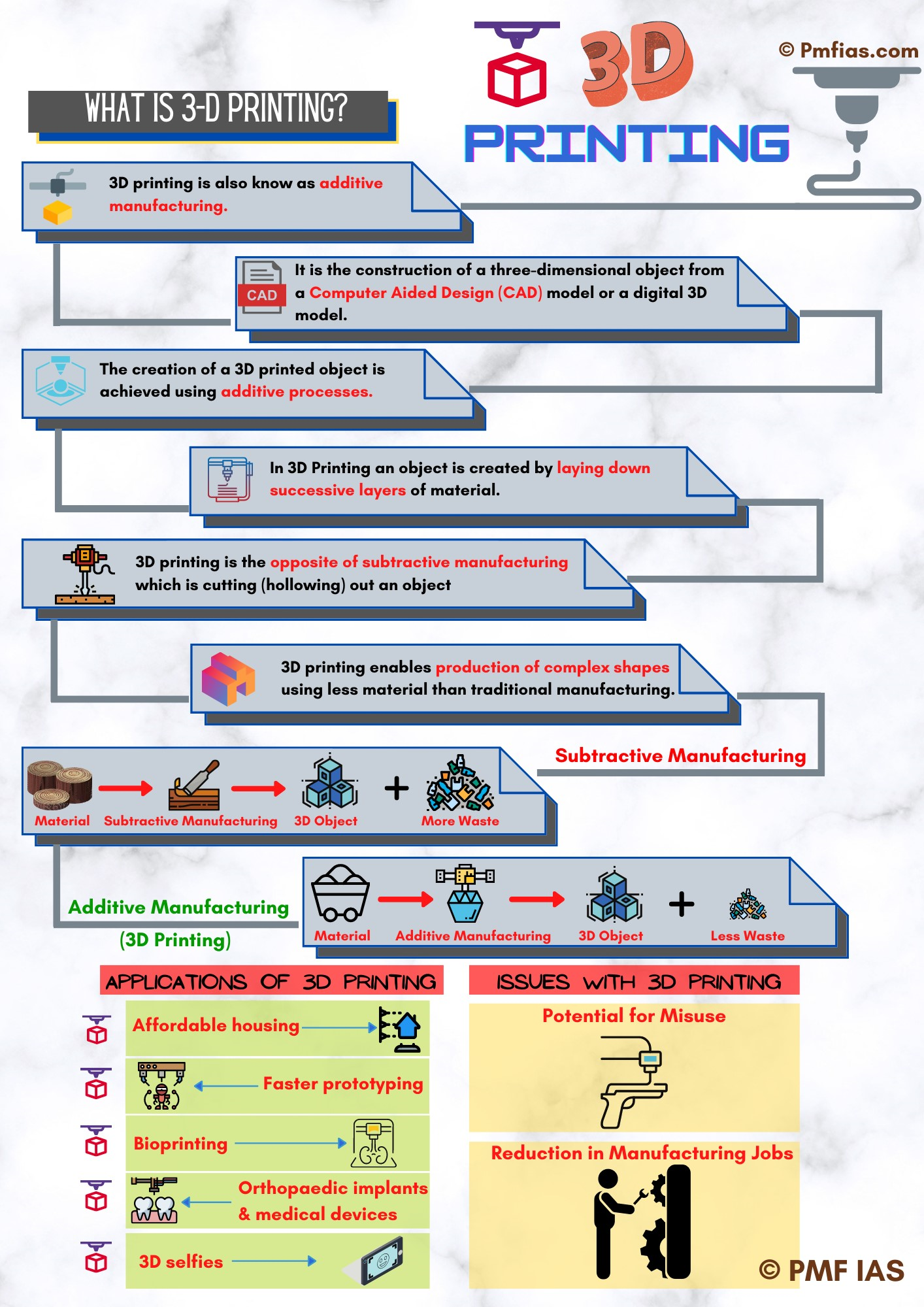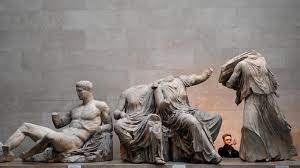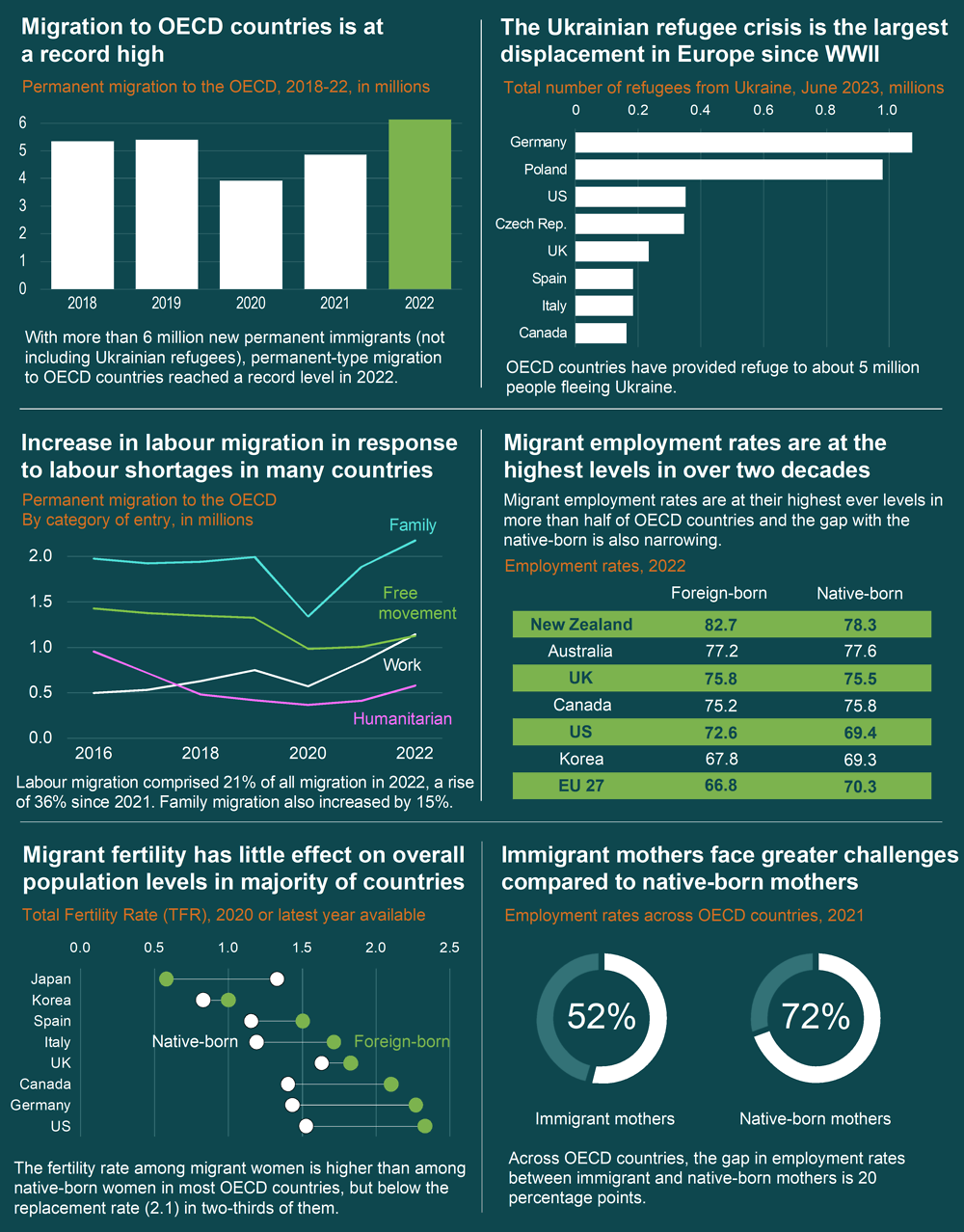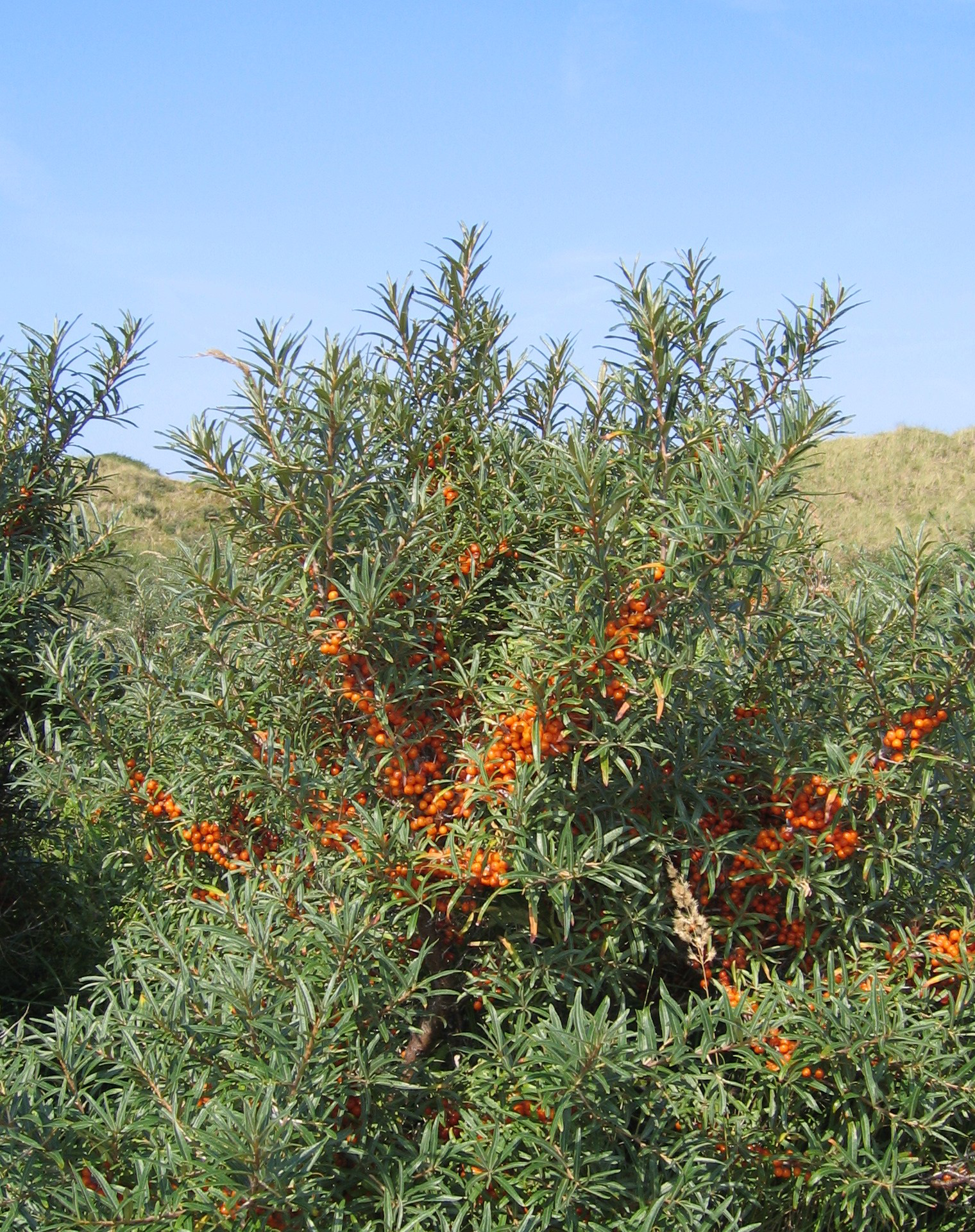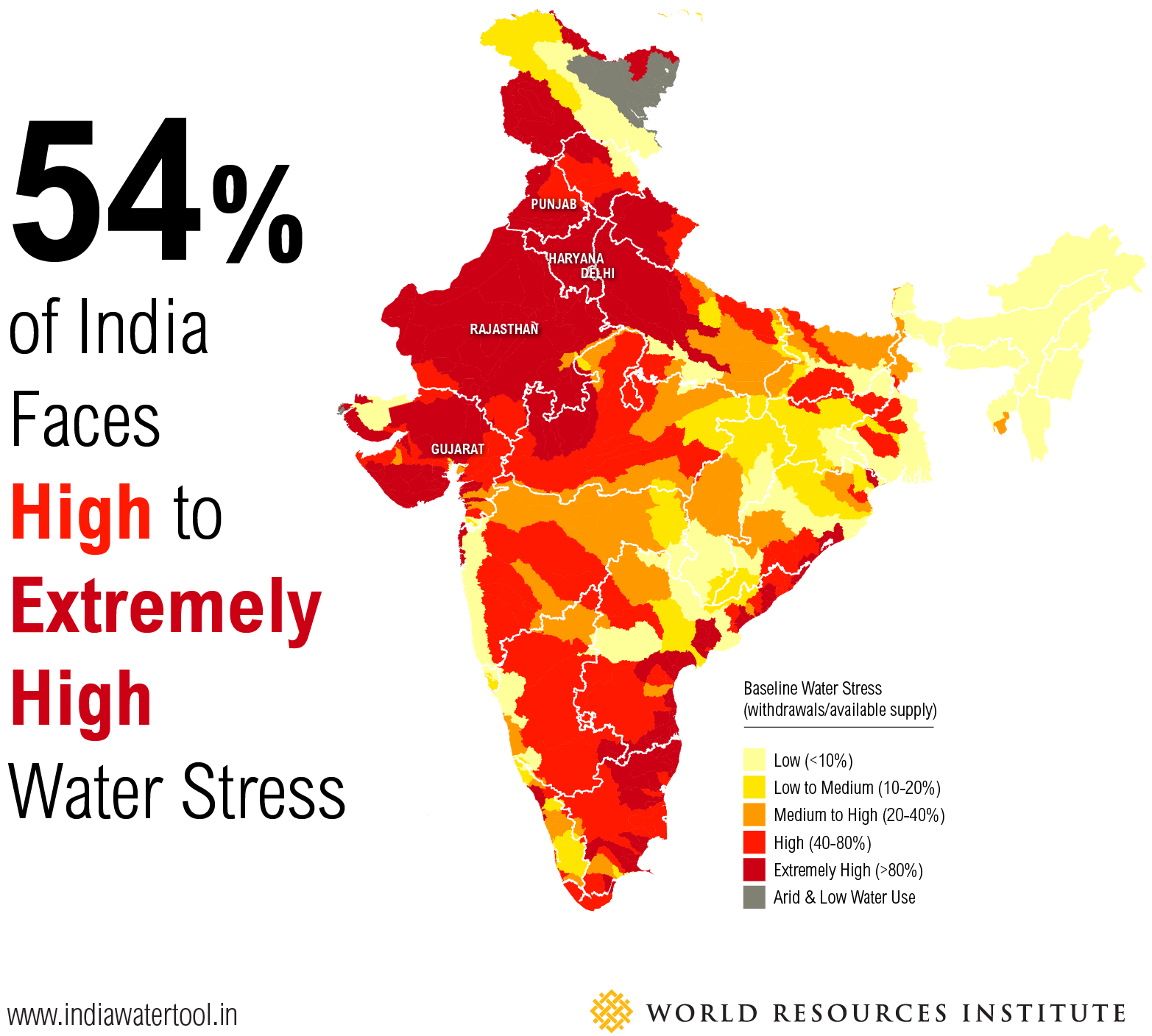
Current Affairs November 05-06, 2023: Zika Virus Outbreak, India-Bhutan Bilateral Relations, Operation Cactus, Ban on Online Betting Platforms
Subscribers of "Current Affairs" course can Download Daily Current Affairs in PDF/DOC
Subscribe to Never Miss an Important Update! Assured Discounts on New Products!
Must Join PMF IAS Telegram Channel & PMF IAS History Telegram Channel
{GS1 – Geo – PG – Climatology} El Nino Drying Out the Southern Hemisphere
- Water availability is the net difference between rainfall on land and water lost to the atmosphere through evaporation and plant transpiration.

How El Nino is Causing a Decline in Water Availability in the Southern Hemisphere
- El Nino is a climate pattern that causes warmer-than-average sea surface temperatures in the central and eastern Pacific Ocean.
- One of the impacts of El Nino is a decrease in precipitation in the southern hemisphere.
- This is because it causes the Walker circulation, a major atmospheric circulation pattern, to weaken.
- In normal conditions, the Walker circulation moves warm, moist air from the western Pacific to the eastern Pacific, where it rises and releases precipitation.
- So, when the Walker circulation weakens, less precipitation falls in the southern hemisphere.

Global Impact of Decline in Water Availability in the Southern Hemisphere
- Increase in carbon emissions: Drying of Amazon Rainforest, the lungs of the planet will reduces carbon sequestration.
- Moreover, the increase of wildfires due to dry forest is causing carbon emissions.
- Food security: Reduced crop yields in the southern hemisphere will negatively impact the global availability of food.
- Economic development: Low water availability can constrain economic growth and lead to job losses. Economic activities are interlinked, which will also strain the global economic scenario.
- Disruptions in Ecosystem: Drier conditions in the southern hemisphere can disrupt ecosystems and cause biodiversity loss.
- Climate Feedback: Changes in the southern hemisphere’s water availability can affect ocean currents and atmospheric circulation, potentially influencing weather events in other parts of the world.
- Global health: Low water availability can increase the risk of waterborne diseases, such as cholera and typhoid. These diseases are contagious and can affect global health if not contained.
{GS2 – Social Sector – Health – Disease} Zika Virus Outbreak
Zika Virus Disease
- Zika virus disease is an infectious disease caused by Zika virus, a mosquito-borne flavivirus.
- Zika virus is transmitted primarily by Aedes mosquitoes, which bite mainly during daytime.
- It is a contagious disease that spreads through:
- sexual contact
- transfusion of blood
- pregnancy (from mother to fetus)
- Symptoms: Rash, fever, conjunctivitis, muscle and joint pain, malaise.
- Treatment: No vaccine or specific treatment.

Source: P.D.Hinduja Hospital
Major Concerns from Zika Virus Infection
During Pregnancy
- Zika virus infection during pregnancy can cause:
- Infants to be born with microcephaly and other congenital malformations
- Preterm birth and miscarriage
- Microcephaly is a neurological condition where a baby has a significantly smaller head than usual for their age and sex.
- In 2016, WHO declared Zika-related microcephaly a Public Health Emergency of International Concern (PHEIC), which ended in the same year.
Major Conditions Associated with Zika Virus
- Guillain-Barré syndrome: It is a rare neurological disorder that causes the body’s immune system to attack the myelin sheath.
- Myelitis: It is inflammation of the spinal cord, which can damage the myelin sheath.
- Neuropathy: It is a condition that damages the nerves outside of the brain and spinal cord.
|
Zika Virus Being a RNA Virus
- Concerns associated with RNA viruses:
- High mutation rate
- Integration: Certain RNA viruses can integrate their genetic material into the host cell’s genome, potentially causing long-term health issues.
- Epidemics and Pandemics: They can adapt to new hosts and spread quickly.
- Antiviral Drug Resistance: Can develop it over time
Aids in Other Mosquito-Borne Diseases
- Zika infections in primates encourage specific microbes to grow on the skin. These microbes produce acetophenones, volatile molecules that attract mosquitoes and aid in virus transmission.
- This suggests that a Zika virus infection can significantly increase the risk for severe dengue.
{GS2 – IR – India-Bhutan} Bhutan King’s Visit to India
- Context (IE | TH): Bhutan’s fourth King landed in Delhi to meet PM Narendra Modi post agreement on delimitation process with China.
- He discussed connectivity initiatives including the first India Bhutan rail link, a 57km line connecting Kokrajhar and Gelephu, where Bhutan plans to build an international airport.
China-Bhutan-India Relations
Border Disputes
- China-Bhutan: Unresolved border disputes over several areas in the western and northern sectors of their boundary.
- China claims about 12% of Bhutan’s territory, including the strategic Doklam plateau, which is also claimed by Bhutan and supported by India.
- India-China: A long-standing border dispute along their Himalayan frontier, especially in the eastern sector of Arunachal Pradesh, which China claims as part of Tibet.
- India-Bhutan: Mostly peaceful, resolved and open border except few small areas.
Strategic Interests
- India-China: Both are competing for influence and leverage in the region, with Bhutan being a key buffer state between them.
- India-Bhutan: India has signed a treaty of friendship and cooperation, India also provides economic and military assistance to Bhutan, as well as access to its markets and ports.
- China-Bhutan: China has been trying to attract Bhutan with offers of diplomatic recognition, trade and investment, and border settlement.
Economic Cooperation
- India-Bhutan: India is Bhutan’s largest trading partner as well as largest development partner of Bhutan, accounting for about 80% of its exports and imports.
- China-Bhutan: The trade between these two countries have been increasing in recent years, with China becoming Bhutan’s second-largest trading partner in 2018.
- China and Bhutan have also explored the possibility of opening up tourism links, which could boost Bhutan’s economy.
Significance of Bhutan for India
- Geographical significance: Shares borders with four Indian states: Assam, Arunachal Pradesh, West Bengal, and Sikkim.
- Bhutan provides access to India’s northeastern states through the Siliguri Corridor.
- Economic Significance: India has consistently been Bhutan’s top trading partner – both as an import source and as an export destination.
- Since 2014, India’s trade with Bhutan has almost tripled in 2021-22, accounting for about 80% of Bhutan’s overall trade.
- Cultural Significance: Both countries have Buddhist population & India helps preserve Bhutan’s cultural heritage.
- Strategic Significance: It shares borders with India and China, acting as a buffer state between the two regional powers and contributes to regional security.
- Regional Stability: Bhutan’s stability is crucial for maintaining regional peace and stability in South Asia and overall stability of the region.
India Bhutan Relations: Convergences
- Cultural ties: Both countries share common cultural heritage of Buddhism and have historical links dating back to the 8th century when a Buddhist monk Padmasambhava went from India to Bhutan and led the Nyingmapa sect of Buddhism.
- Hydro-power cooperation: India has constructed four hydro-electric projects (HEPs) in Bhutan totalling 2136 MW, already operational and supplying electricity to India.
- Strategic partnership: India also plays a role in protecting Bhutan’s sovereignty and territorial integrity, especially in the face of China’s claims over parts of Bhutan’s border.
- Cooperation in New and Emerging Areas:
- Space cooperation: Both countries jointly inaugurated the Ground Earth Station of the South Asia Satellite (SAS) in Thimphu and launched India-Bhutan SAT, the first satellite jointly developed by India and Bhutan.
- Fintech: The RuPay Card India’s Bharat Interface for Money (BHIM) application was launched in Bhutan to promote cashless payments between the two nations.
- Education and Capacity Building: Many Bhutanese students benefit from scholarships provided by Indian Govt. for studying in Indian educational institutions.
- Under the ITEC program, India provides administrative and technical skills to government officials and private sector employees.
India Bhutan Relations: Divergences
- Border disputes: Disputes such as in the middle zone between Sarpang and Geylegphug and the eastern frontier with Arunachal Pradesh.
- Hydropower cooperation: Seen as favourable to India and impacting the economy and the environment of Bhutan.
- India’s paternalistic attitude towards Bhutan: India’s alleged attempt to thwart the Bhutanese bid to diversify its foreign policy (2013) and interference in internal politics are criticised in Bhutan.
- Regional Connectivity: Bhutan’s reluctance in being a part of BBIN (Bangladesh, Bhutan, India, Nepal).
Way Forward
- Deepening Economic Cooperation: Exploring opportunities for collaboration in sectors such as infrastructure, energy, tourism, agriculture, and information technology.
- Strengthening Strategic Cooperation: By collaborating on security issues, including counterterrorism, border management, and intelligence sharing.
- Regional Cooperation: Collaborate closely on regional forums such as the SAARC and BIMSTEC.
{GS2 – IR – India-Maldives} Operation Cactus
- Context (IE): Opposition candidate Mohamed Mizzu recently won the Presidential election in Maldives.
- Considering his ‘India Out’ Stance, let’s take a re-look at the events of November 3, 1988, when Indian troops intervened to thwart a coup attempt in the island nation.
Operation Cactus
- “Operation Cactus” was the Indian military operation conducted in 1988 in the Maldives in response to a coup attempt that threatened the government of President Maumoon Abdul Gayoom.
India’s Intervention
- Within hours of the request by the Maldivian President, the Indian govt, led by PM Rajiv Gandhi, decided to intervene.
- The Indian Armed Forces, primarily the Indian Army and Air Force, launched a quick and effective intervention. This operation was codenamed ‘Operation Cactus’.
- Indian paratroopers were airlifted from Agra and landed at Hulhule airport near the Maldivian capital of Malé. It was instrumental in regaining control and thwarting the coup attempt.
- The Indian Navy also played a crucial role, with naval vessels deployed to cut off escape routes for the mercenaries.
Outcomes & Impact
- The operation was remarkably successful. The legitimate government of President Gayoom was secured within hours, and the mercenaries were captured.
- It highlighted India’s role as a regional power capable of ensuring stability in the Indian Ocean region. The operation received international acclaim for its efficiency and speed.
- It strengthened India’s relationship with the Maldives and bolstered India’s position as a key security provider in the region.
India-Maldives Ties: Convergences
Recent Connectivity Measures
- $500 million Greater Malé Connectivity Project (GMCP): The largest civilian infrastructure project in the Maldives, connecting Malé with 3 neighbouring islands.
- Direct cargo ferry service between Cochin to Male: To provide predictability in supplies for importers in Maldives and exporters in India.
- Air travel bubble: To facilitate people’s movement for employment, tourism & medical emergencies.
On Political & Strategic Front
- Both countries have reaffirmed their commitment towards “India first policy”.
- Both countries are part of UN, Commonwealth, NAM, and SAARC.
- Maldives extends its full support to India’s entry into the UNSC as a permanent member, while India supports Maldives entry as non-permanent member.
Defence & Security Cooperation
- A comprehensive Action Plan for Defence was signed in 2016 to consolidate defence partnership.
- India provides the largest number of training opportunities for Maldivian National Defence Force (MNDF), meeting around 70% of their defence training requirements.
- The joint military exercise ‘Ex Ekuverin‘ between the Indian Army and the Maldives National Defence Force is conducted annually.
Economic & Trade
- India and Maldives signed a trade agreement in 1981, which provides for export of essential commodities.
- India emerged as Maldives’ 3rd largest trade partner in 2021. India‐Maldives bilateral trade crossed the $300 MN mark for the first time in 2021.
- A Bilateral USD Currency Swap Agreement between RBI and Maldives Monetary Authority in 2019.
Tourism
- The tourism sector of Maldives is the major source of foreign exchange earnings and accounts for about 75% of the government’s revenue.
- India was the 5th largest source of tourists in 2018, which raised to top most source during 2022.
Education & Capacity Building
- India has traditionally offered a substantial number of scholarships to Maldivian youth under ICCR, “India Science and Research Fellowship (ISRF) Programme and ITEC programme.
India-Maldives Ties: Divergences
- Political volatility: Opposition parties (ruling party at present) engagement in ‘India Out’ campaign.
- Territorial security: Combined impact of Political instability, Economic crises, Islamic Radicalization (in Maldives) has led to threat of Terrorism, jeopardising security & development within India and its neighbourhood.
- Rising influence of Pakistan-based madrassas and Al Qaeda, recent attack on Md. Nasheed a pro-democracy & pro-India leader.
- Non-traditional challenges: Including piracy, maritime terrorism, smuggling, human trafficking etc.
- China’s rising assertiveness in IOR: for e.g., Belt & Road initiative, infrastructure projects, port development, military cooperation etc.
Way Forward
- Strengthen bilateral relations: Both the countries need to strengthen cooperation on common agendas – trade & development, maritime security, climate change, capacity development, people-to-people relations, defense cooperation, Islamic extremism etc.
- Increase Investment: India can maintain its political influence in South Asia only if with a strong economic presence must quickly move to conclude pending FTAs with neighbouring nations.
- Promoting Maldives’ “Blue Economy” can be a key to booting economic ties & island development.
- Timely execution of developmental projects may serve to improve India’s credibility vis a vis China.
- Policy Change: India’s “wait and watch” policy needs a re-look and proactive responses must be crafted to support development and stability in Maldives.
{GS2 – IS – Initiatives} National Security Strategy
- Context (IE | TW): India is working on its first-ever National Security Strategy (NSS).
- National Security Strategy (NSS) is a comprehensive document outlining national security objectives and the means to achieve them.
- Apart from the challenges and threats India faces, NSS also addresses non-traditional threats to India’s security, including:
- Financial and economic security
- Food and energy security
- Information warfare
- Critical information infrastructure vulnerabilities, supply chains, and the environment
Multiple Unsuccessful Attempts
- Since its independence in 1947, India has not defined a National Security Strategy (NSS).
- In 2007, a draft NSS was prepared by the Integrated Defence Staff but wasn’t approved by the Cabinet Committee of Security.
- In 2018, the GoI established the Defence Planning Committee, whose mandate includes drafting a National Security Strategy for India.
- In 2021, Chief of Defence Staff (CDS) General Bipin Rawat emphasized the need to define the NSS.
|
Need for National Security Strategy
- Considering increasing geopolitical tensions, it is imperative to develop a national security strategy.
- Without a well-defined strategy, military reform would not be possible.
Benefits of National Security Strategy
- Guide the military and critical defence and security reforms.
- Provide a holistic view of the overall national security, the threats, & the roadmap to address them.
- Bring the major military reforms.
- Bring accountability to defence management, which is currently lacking.
Chief of Defence Staff (CDS)
Eligibility
|
{GS2 – MoEITY – Laws} Ban on Online Betting Platforms
- Context (TH | PIB): Ministry of Electronics and Information Technology (MeitY) has issued blocking orders against 22 illegal betting apps & websites, including Mahadev Book and Reddyannaprestopro on account of its unlawful operations.
Gambling
- Gambling is an act of wagering or betting money or something of value on an event with an uncertain outcome with the intent to earn more money.
- The global online gambling market size was valued at USD 63.53 billion in 2022 and is expected to grow at a compound annual growth rate (CAGR) of 11.7% from 2023 to 2030.
- Asia-Pacific region is the largest online gambling market, with China and Japan being the biggest contributors.
Difference Between Game of Skill & Game of Chance
|
Game of Skill |
Game of Chance |
| Players invest time in learning, practicing and honing skills. | Outcome of game depends on factors like luck and unpredictability. |
| Success of the game depends on superior knowledge of the game, training, attention, and experience of the lawyer. | Results are uncertain. |
| Skills have to be the predominant element in the game. | A game of chance is considered gambling. |
Legality of Gambling in India
- The Public Gambling Act of 1867 prohibits running or being in charge of a public gambling house.
- Amendment in Information Technology Act of 2011 stated that website offering online gambling services must be located outside India.
- In India, Gambling is under the State List, thus, states have the right to formulate their own gambling laws. Some states, like Goa and Sikkim, have legalized casinos.
Legalising Gambling in India: Arguments in Favour
- Enhanced Revenue: through taxes and licensing fees.
- Employment generation: direct emloyment in casinos and betting establishments, and indirect employment in associated hospitality (e.g. Goa) and tourism sectors.
- Regulation: protects the consumer against fraud and unfair practices.
- Curbing Illegal Gambling: which are often unregulated, unsafe, and can fund other illicit activities.
- Boost to Tourism: For example, in Goa, casinos has been major tourist destinations generating revenue for the government.
Legalising Gambling in India: Arguments Against
- Regulatory Challenges: Developing a comprehensive legal framework that addresses both online and offline gambling, aligns with state and central laws, and effectively tackles associated crimes like money laundering, is complex.
- Cultural Opposition to gambling in many parts of India, which might pose challenges in legalizing it.
- Effective Implementation require significant resources and infrastructure, which might be challenging.
Way Forward
- Developing a Regulatory Framework: that outlines licensing procedures, operational guidelines, and consumer protection measures.
- Promoting Responsible Gambling: By implementing policies and programs to promote responsible gambling, including age restrictions, betting limits, and resources for addiction treatment.
- Combating Associated Crimes: Such as money laundering and match-fixing by strengthening laws and enforcement mechanisms.
{GS2 – Polity – IC – Judiciary} Advocate-on-Record
- Context (IE): The SC dismissed a PIL filed by an Advocate-on-Record (AoR: a registered lawyer authorized by the SC to represent clients in that court).
- AoRs play a vital role in the Indian legal system by maintaining the quality of litigation in the SC.
Functions of AoR
- Exclusive Right: Only AoRs have the exclusive right to file and argue cases in the SC on behalf of their clients.
- Link to SC: AoRs serve as the link between litigants and the SC.
- Appearing in Other Courts: AoRs can also appear before other courts.
- Legal Tasks: They can draft petitions, affidavits, and other legal applications on behalf of their clients.
Eligibility
- Complete a one-year training program with a court-approved AoR.
- Have at least four years of legal practice before commencing AoR training.
- Clear the exam with a minimum of 60% score.
- Maintain a registered office within sixteen kilometres of the SC building.
Rules Governing the AoR System
- Constitutional Provision: Under Article 145 of the IC, the SC can establish rules to regulate its own procedures, including qualifications for practising before the court.
- Legal Provision: Section 30 of the Advocates Act allows any lawyer enrolled with the Bar Council to practice law before any court or tribunal in India.
{GS2 – Polity – IC – Election} Split Voting System
- Context (TH): Odisha and Auckland (New Zealand) exhibit split voting behaviour in their political systems.
- In the 2019 Odisha election, voters split their votes despite casting them on the same day.
- Considering the LS votes, the Biju Janata Dal (BJD) led in 88 out of 146 Assembly Constituencies. However, for Assembly votes, the BJD won 113 out of 146 Assembly Constituencies.
- This behaviour offers insights into voter preferences and the effectiveness of electoral systems.
- A split voting system allows voters to split their votes and vote for two different parties.
MMP System
- The Mixed-Member Proportional (MMP) system allows voters to split their votes or give both votes to one party (double tick).
- Under MMP, voters have two votes:
- A party vote: To determine the overall parliamentary composition.
- An electorate vote: To select a local MP.
|
- It allows voters to choose a candidate from a different party if they don’t like the local candidate from their preferred party.
- In parliament, winning candidates become MPs, and the remaining seats are filled from party lists.
|
Advantages of Split Voting System
- Localized Accountability: Candidates cannot rely on party affiliation alone, as voters can choose a party without voting for its local candidate.
- Policy Focus: Parties can focus on policies and ideologies to gain party votes, as they don’t need to prioritize candidate win ability.
- Enhanced Democracy: Allows voters to express diverse political preferences.
- Flexibility: Voters can choose the best candidate-party combination based on their beliefs without affecting each other.
- Improved Representation: Enhances representation for women, indigenous communities, differently abled individuals, and marginalized groups.
- Lower Entry Barrier: It encourages young politicians to enter politics, leading to a decline in the average age of MPs.
Split Voting In Indian Electoral Framework
- Many voters hesitate to vote for candidates outside their preferred party, fearing repercussions on the broader political canvas.
- A split voting system can address this issue, allowing voters to choose candidates based on merit while ensuring that their party preference influences legislative composition.
{GS3 – IE – Capital Market} Hindsight Bias and Equity Markets
- Context (TH): Recent fluctuations in global equity markets show that hindsight bias, a tenet of behavioural economics, is a major determinant of the quity market.
|
Hindsight Bias
- Hindsight bias is a cognitive bias that makes people overestimate the predictability of past events.
- It is also known as the ‘I-knew-it-all-along’ phenomenon or creeping determinism.
- It can lead to people making poor decisions about economic investments and policies.
Factors Indian Markets Falling Prey to Hindsight Bias
- The factors contributing to hindsight bias in equity markets, especially in the Indian context, extend beyond surging bond yields.
- Other contributing factors to hindsight bias in India are:
- Currency valuation discrepancies: Indian rupee’s overvaluation compared to its main export competitors can reduce foreign demand for Indian goods and impact the Indian economy.
- Post-pandemic recovery patterns: India’s post-pandemic recovery has favoured the wealthy over the poor, resulting in reduced household savings and a slowdown in rural consumption.
- Geopolitical strains: The conflict in West Asia has pushed up the prices of oil and gas, which is putting pressure on Indian businesses and consumers.
- Inflationary pressures: Inflation is on the rise in India, particularly in food and services. This is eroding household purchasing power and further dampening consumption.
- Contrasting behaviour of foreign and domestic investors: Foreign institutional investors (FIIs) are selling Indian stocks, while domestic institutional investors are buying, indicating a difference in opinion on India’s economic outlook between foreign and domestic investors.
{GS3 – IE – Capital Market} Listing on Foreign Stock Exchanges
- Context (IE): The GoI has allowed some Indian companies to list directly on specific foreign stock exchanges.
- In 2020, the Centre amended the Companies Act, allowing the direct listing of Indian companies on foreign stock exchanges.
- Earlier, Indian companies:
- Were not allowed to list directly on overseas exchanges.
- Could access the overseas markets:
- Through American Depository Receipts (ADRs) and Global Depository Receipts (GDRs)
- By listing their debt securities (foreign currency convertible bonds, masala bonds, etc.) on foreign markets.
Advantages Of Overseas Listing
- Availability of a large and diverse pool to raise capital
- Broader investor base
- Better valuation
- Global brand recognition
- Alternate source of foreign currency
- Better corporate governance
- International expansion
- Helps the startups looking to raise funds from outside of the country.
American Depository Receipt (ADR) and the Global Depository Receipt GDR)
- These are the negotiable certificates issued by the depository banks, using which an Indian company can sell its shares in the global stock markets.
- Similarly, using the Indian Depository Receipt (IDR), foreign companies sell their stocks or shares in the Indian stock markets.
Financial Securities
|
{GS3 – S&T – AI} World’s First Artificial Intelligence Safety Summit
- Context (IE | IE | IE | PIB): The world’s first Artificial Intelligence (AI) Safety Summit was held at Bletchley Park in the UK.
The Bletchley Park Declaration: Outcome of the AI Safety Summit
- At the summit, the Bletchley Park Declaration was signed to minimise risks from ‘frontier AI’.
- 28 countries that have signed the declaration include the US, China, Japan, the UK, France, and India, and the European Union.
- The declaration was also endorsed by Brazil, Ireland, Kenya, Saudi Arabia, Nigeria, and the UAE.
Why Bletchley Park was Selected for the AI Safety Summit
- The AI summit was held at Bletchley Park as a tribute to its contribution during World War II.
- Britain’s Government Code and Cypher School was moved to this Victorian country house during World War II.
- Bletchley Park is most known for cracking the ‘unbreakable’ Enigma code.
- Enigma machines were cypher machines used by the Nazis to encrypt their radio messages.
- Turing Bombe, an electromechanical device that replicated the action of Enigma machines was used for deciphering the enigma codes.
- British mathematician Alan Turing built the Turing Bombe.
Colossus: A Contribution of Bletchley Park for Ushering in the Age of Computers
- Colossus is another machine built at Bletchley Park by Tommy Flowers under Max Newman.
- It is used in the cryptanalysis of the Lorenz cypher, used specifically by the German High Command.
- It is regarded as the world’s first programmable, electronic, digital computer.
Frontier AI
- Frontier AI is defined as highly capable foundation generative AI models that could possess dangerous capabilities that can pose severe risks to public safety.
- Generative can produce various types of content, including text, imagery, audio and synthetic data.
- Foundation models are trained on a broad set of unlabeled data that can be used for different tasks with minimal fine-tuning.
- Foundation models will replace the task-specific models that now dominate the AI landscape.
Threats from Frontier AI
- Mass misinformation and disinformation: E.g., use of deepfakes.
- Cyber-attacks or fraud
- Access to harmful information
- Harmful or biased decisions
India’s Stand on the AI Safety Summit
- India as the chair of the Global Partnership on Artificial Intelligence (GPAI), has taken a leadership stand on AI.
- It stated that AI should be guided by:
- Principles of safety and trust for users
- Accountability for platforms
Global Partnership on Artificial Intelligence (GPAI)
- GPAI is a multi-stakeholder initiative bridging the gap between AI theory and practice through research and applied activities on AI priorities.
- It will bring experts from industry, civil society, governments, and academia to promote responsible evolution of AI.
- It is built around a shared commitment to the OECD Recommendation on AI.
- Initially, it will work on four themes:
- Responsible AI
- Data Governance
- Future of Work
- Innovation and Commercialisation
- Its founding members are Australia, Canada, the European Union, France, Germany, India, Italy, Japan, the Republic of Korea, Mexico, New Zealand, Singapore, Slovenia, the UK and the US.
{Prelims – Infra – Roads} Upgradation of NH 144A
- Context (TH | PIB): The Border Road Organisation (BRO) has achieved a breakthrough in the upgradation of National Highway 144A between Akhnoor to Poonch stretch of the highway.
- The upgradation project is under Prime Minister’s National Development Package announced in 2015 as Reconstruction Plan for Jammu & Kashmir.
National Highway 144A
- It was given the status of national highway and named NH 144A by the central government in 2015.
- It connects Jammu provincial headquarters with Rajouri and Poonch districts besides parts of Reasi district and Akhnoor sub division of Jammu district.
- The NH144A has been upgraded from two lanes to four lanes.
Significance of the Upgradation
- Cut travel time between Poonch-Rajouri and Jammu from the present 6-7 hours to 4.5 hours.
- Speedy movement of defence vehicles to areas along the Line of Control right from the Chicken Neck in Akhnoor sub division up to Poonch district adjoining Kashmir Valley at all times.
Border Road Organisation
|




![PMF IAS Environment for UPSC 2022-23 [paperback] PMF IAS [Nov 30, 2021]…](https://pmfias.b-cdn.net/wp-content/uploads/2024/04/pmfiasenvironmentforupsc2022-23paperbackpmfiasnov302021.jpg)

